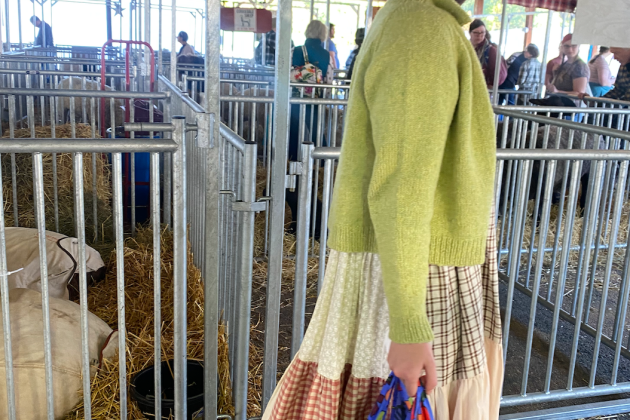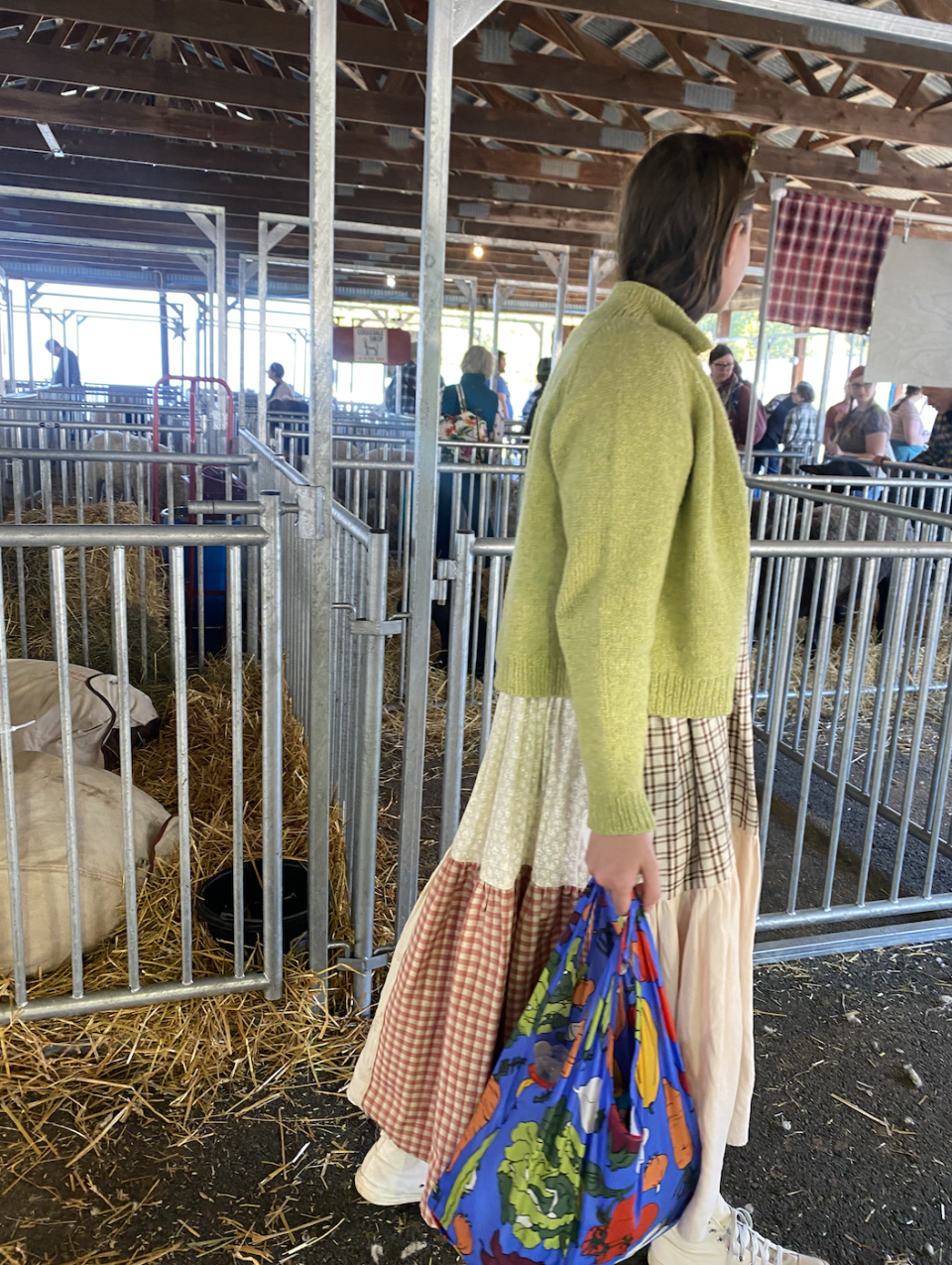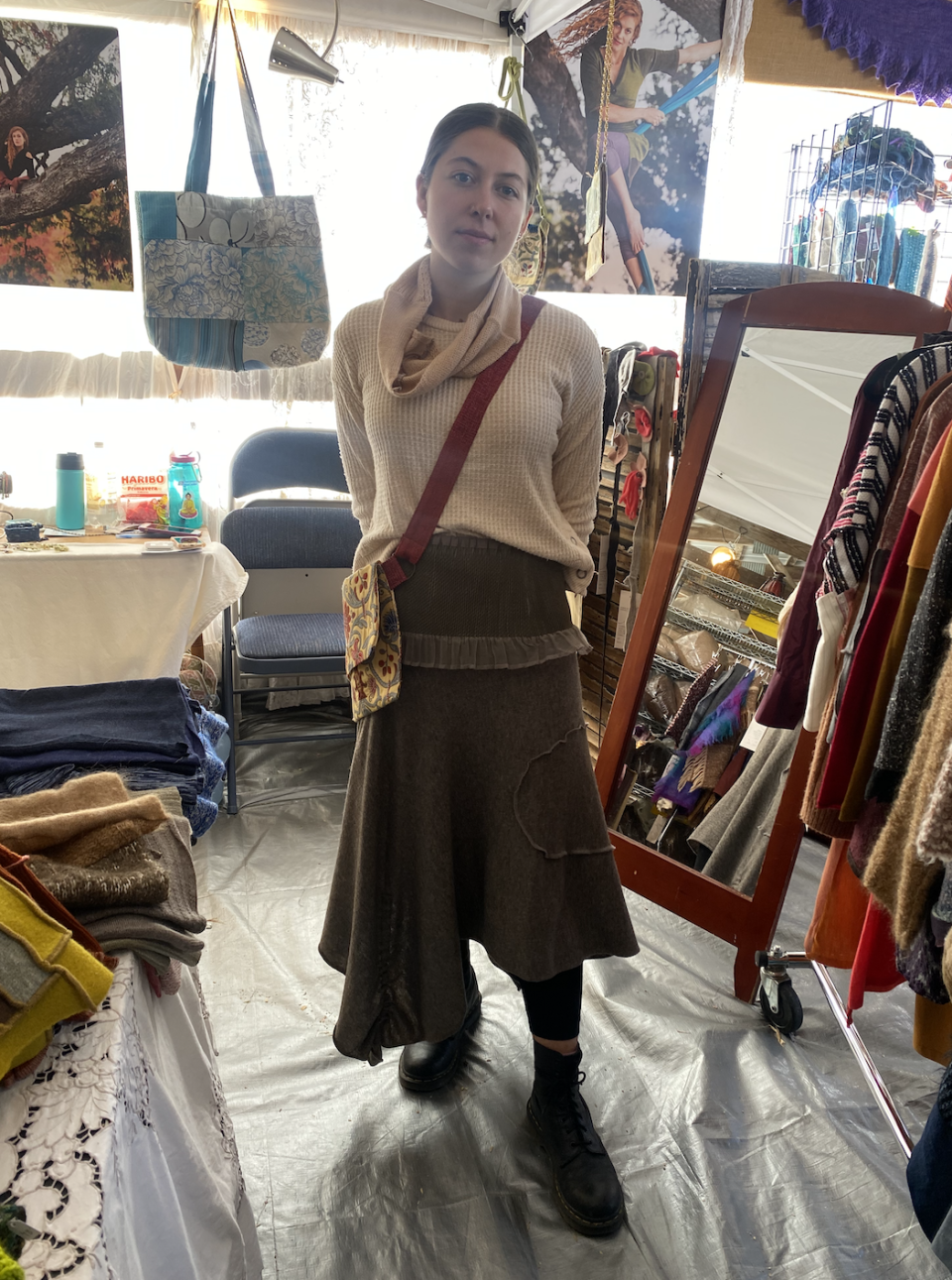Wool Wearings: Upstate Fashion at New York Sheep and Wool Fest

RHINEBECK, N.Y. — To denim heads, there is Kingpins, but to fiber hobbyists, herders and professionals, there is the New York State Sheep and Wool Festival. What seems like one kitschy event is a center of a growing fashion trend: Wool is in.
Each year, the festival draws some 30,000 attendees and 300-plus vendors to the Dutchess County Fairgrounds in Rhinebeck, New York. In 2020, the event was modest and virtual but it returned in earnest last year, and this year saw a packed event last weekend.
More from WWD
Along with the barn animals and stretches of woolen wonders, there were displays of homemade soaps, jams and yarns. Equipment auctioneers had their moment, as did the livestock, workshops (which included trendy activities like foraging, weaving, hand-knitting and more) and upstate street stylers (field fashionistas) sporting earthen tones, piles of knits, patchwork frocks and harvest-themed prints.
Though the fashion community continues to harbor its synthetic fiber addiction (taking up a whopping 54 percent of the 113 million tonnes of fiber produced last year, per Textile Exchange), there is a growing herd of designers challenging the status quo. For one, nonprofit Fibershed hosted an educational booth, propped adjacent to a barn where 4-H students were selling local Hudson Valley cider for $2. The organization showcased how localism plays out on a global stage, tracing the soil origins of its certified-Climate Beneficial wool, or wool sourced from specially developed regional textile economies that promote carbon drawdown.
“What excites me about using wool is that we can approach it the way we’re doing it, through Climate Beneficial practices,” Mara Hoffman, designer of her eponymous label, told WWD. Though Hoffman hasn’t attended the festival herself, she found the means to achieve better wool for her value chain by working with Fibershed. “The sheep being used are an integral part of the carbon sequestering process and practice of regenerative farming contributes to reversing climate change. It’s exciting to know we are taking actionable steps toward reducing our climate impact.”
In just four years, the Fibershed has seen more than 45,550 metric tons of carbon dioxide equivalents saved through its community carbon farming practices, and more than 200,000 pounds of Climate Beneficial wool verified and moved into value chains that fund ecosystem restoration. This is just some of the backstory available to attendees perusing the fair if they stop and chat a while with vendors.
As for how the wool festivalgoers expressed themselves, there was most definitely a standout theme seen in the prevalence of multicolored crochet vests and hats and the like, perhaps demonstrating technical merit or otherwise free spirits.
On the internet, TikTok users are still going strong on DIY trends like crocheting, knitting, upcycling and more. As an indication of its appeal, “crochettiktok” has more than 2.1 billion views (as of Oct. 18) while, “crochet” has garnered a substantial 10.9 billion views (perhaps skewed by style aficionados tagging their outfit breakdown). Upcycling has 7.6 billion views, mind you.

One vendor, Fromm Designs, which is a partnership between German designer Christine Fromm-Thalemann and relative Analena Thalemann, was keen on taking existing materials, mainly fine merino wools and cashmeres, from friends and reworking them into tasteful patchwork and minimalist creations to sell at the festival. One royal blue mix-blend snood went for $40 while a generously sized fabric fanny pack (reminiscent of a Dagne Dover-style pack) went for $80. Knit skirts, tanks, balaclavas and gloves were also for sale.
Though their e-commerce website is down, (Instagram account @Frommdesigns is one point of contact) Thalemann was a walking advertisement for the designs, wearing an asymmetrical charcoal gray skirt, patterned crossbody bag and cowl neck sweater styled with Dr. Martens. Thalemann said she loves the custom skirt, especially, because of the adjustable nature. She bent to demonstrate, pulling on the scrunch stitch.

Perhaps wrongly, festivals that center largely on home-working skills and activities tend to get cast as “niche” or “alternative,” potentially diminished because the hobby is mostly being taken up by women. But bobbing through the crowds on the sunny fall opening day, the packs of people streaming into the stalls tell a different story.
One attendee, in line for funnel cakes, exclaimed: “There are more people than I’ve ever seen here.”
The point is, wool is trending and the festival’s turnout — along with regenerative wool projects like Hoffman’s — only further demonstrates the case.


